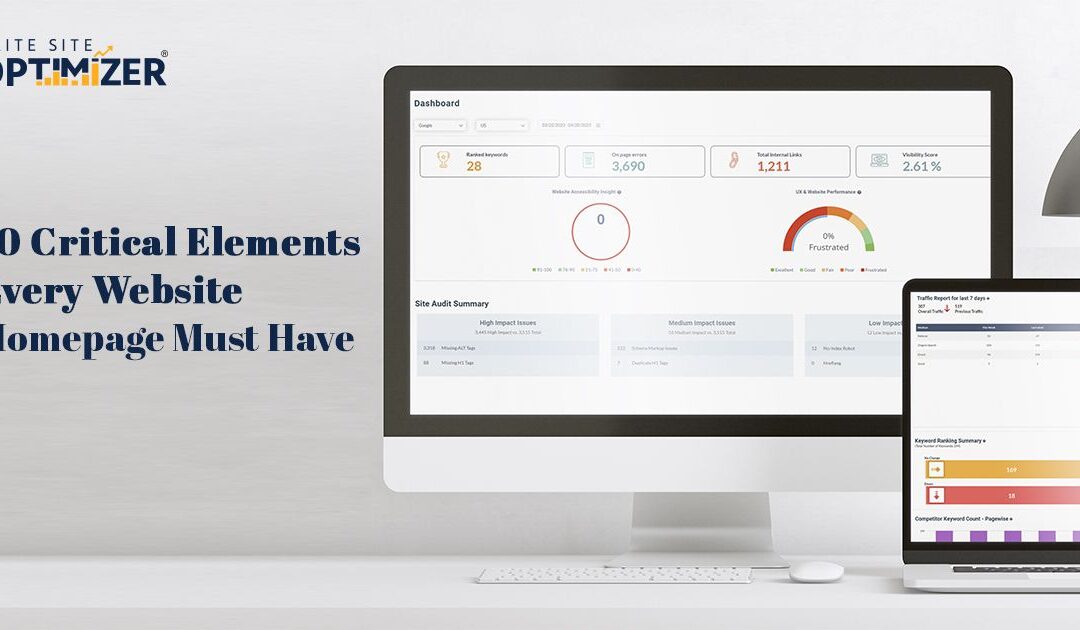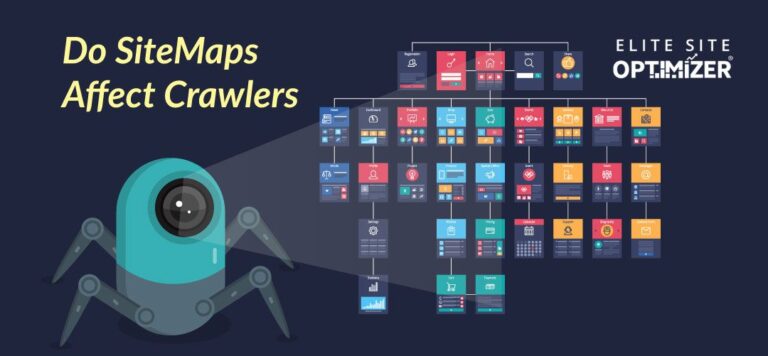During job interviews, all of us tend to put forth our best foot. Every individual is committed to making the best first impression.
In a similar manner, every time someone lands on the homepage of your website, your business undergoes a stage of a ‘job interview.’ People tend to critique what they observe in detail while determining an opinion about your business and analyzing whether or not they should avail of services from your brand.
It is crucial to ask yourself, “Is the homepage making the best first impression on the visitors?” The fact is that most business websites out there tend to miss out on the mark -whether or not they are aware of this fact. Ultimately, it could be highly challenging. Perhaps, the traffic on the website is low, or the website is not capable of generating the leads you expect out of it. As an online audience tends to notice your website’s homepage as the first encounter of your brand, the homepage design and its elements can play a vital role in achieving your website goals.
Creating Homepage Messaging to Offer Value to the Prospects
As buyers, when we come across products or services in which we are interested and go ahead with visiting the homepage of the official website of the business, we are usually searching for specific answers. Chances are that we would like to know about a particular feature, the total cost of the products, what makes the products or services different from others, or if everything is delivered exactly as promised.
Whatever might be the reason, we are constantly searching for in-depth information that will help us determine if we should trust the company or buy from them. It is the same for your potential clients. When they visit your website for information, they are not concerned about the entire original story of the brand. They want to understand what is in the game for them. They want to observe how your business will solve their problems.
Think of a recent purchase you have researched or made online wherein you have had an affirmative buying experience. Did the brand take time to explain how the products and services will meet your needs? Or did the brand leverage its homepage to explain its location, the origin story, and other information? If you wish your website is turning potential clients into successful customers, you need to design it the way in which your business aims at solving the unique needs of visitors. You should start working on the homepage.
Homepage -Your Website’s Top Priority
Most businesses leverage the website’s homepage to explain their story and what they have to offer. However, it might not be the primary motive of your homepage. Your messaging is expected to speak to the target audience in a highly effective manner.
One of the primary responsibilities of the homepage of your business is to transport visitors to the next page. As prospects land on the homepage, all that is revealed is that they have ultimately found your brand. The next stage is that you should aim at getting the prospects to the next page. For instance, you can make the visitors learn more about a specific product or know about your product pricing. It is your objective to naturally take the visitors further down the funnel while encouraging them to make a purchase.
Moreover, this information will assist you in better understanding the intent of the customers and how you can market them effectively. At the same time, it will also help your sales team analyze how to nurture prospects in conversation. When you know what your leads are searching for, it will eventually improve the overall sales process while helping your team add more context to the respective interactions.
So, how can the website’s homepage help prospects get to the next subsequent page? Core elements that every homepage is expected to possess will assist in building improved traffic, potential leads, and sales. The elements that should be actually present on the homepage might vary. However, there are some core elements that every website’s homepage is expected to feature -irrespective of the industry or audience.
Read Also:- What Impact Do Meta and Title Tags Have on the Search Engine Rankings?
Top Key Elements to Include on the Homepage
Your business needs to feature an attractive, user-friendly homepage that is helpful in informing visitors and encouraging them to venture across your website. Here are some of the most common homepage elements in any website design that will draw more prospects to your website:
1. A Well-defined Value Proposition
Make your visitors know what you are doing or offering with a well-defined, clear, and easy-to-find value proposition. This might appear as a no-brainer. However, you will be surprised to observe the number of websites out there not possessing this core element.
When visitors to your website do not have a proper understanding of what your business delivers, who is the target audience of your business, and how your business does it uniquely, they are not likely to be around your website for long. Therefore, it is recommended to set the right tone quite early with a focused and brief value proposition. Just make sure that your value proposition is clear, well-defined, and customer-centric.
2. A Clear CTA or Call-to-Action
As soon as someone lands on your homepage or any other page on the website, it should be clearly stated what specific action you would want out of them.
On the homepage, it is typically regarded as the ‘top of the funnel action. It could include subscribing to the blog. On the other hand, it could also depict a ‘bottom of the funnel’ action like requesting a consultation.
You can consider sitting down with your design and marketing team to decide one or two core actions you would want visitors to execute upon landing on your site. When you have multiple CTAs or Call-to-Actions, it will ultimately confuse the visitors while creating clutter in the journey of the buyers.
3. Interactive Navigation
The website’s navigation should be seamless, easy to use, and easy to understand. It should be simple enough for even the first-time visitor to find what they are searching for.
This implies that the navigation of the website -especially the homepage, should be fairly interactive and intuitive. It is crucial to keep in mind all relevant actions someone would consider taking on the homepage. For instance, if your blog is the page experiencing higher traffic, it is important to make the same accessible with the help of seamless navigation.
4. Content Highlights or Learning Center
As your content remains the heart of the inbound marketing strategy of your website, you should encourage visitors to view as well as subscribe to your content. You can highlight the same on the website’s homepage.
Your webinars, blogs, podcasts, and other content reveal your overall expertise as a brand while also building ample trust at the same time. Valuable content references on the homepage also provide users with a low-risk option to consider converting and starting a relationship with the brand. Industry experts usually recommend website owners club all the content in a dedicated hub referred to as the Learning Center.
With this context in mind, you can also think of including a separate subscription box featuring a lead magnet or simply featuring a live feed of the latest content in the Learning Center.
5. Overview of Features and Services
It is not essential to provide in-depth information about your products or services on the homepage. However, it is still crucial to include a concise, well-defined summary of the products or services to reinforce to the target audience that you can deliver what they are looking for.
When you showcase product or service information on the homepage, it offers a dedicated space to link visitors to what they are searching for. Moreover, it also helps your website rank higher for a particular range of products or services in search engines.
6. Social Proofing Through Client Testimonials
Research reveals that around 79 percent of consumers trust testimonials and online reviews -quite similar to personal recommendations from peers or friends. Therefore, when your business features positive reviews from previous or current customers, it is recommended to capitalize on the same.
Allow potential customers and homepage visitors to know that you are not only boasting about your claims or accomplishments you make. Rather, showcase them your best reviews or case studies. Highlight the same in detailed narratives or video interviews with relevant data to support the impact you have had on the customers.
Testimonials, along with other modes of social proof, help in building ample trust and allowing people to know that they can be confident in selecting your products or services.
7. Contact Information
Have you ever been in need of customer services or tech support? Not able to come across a phone number or email address on the website to assist you? Do not put your potential customers in the same position.
Visitors should be capable of coming across the contact information of your business easily on the website’s homepage. Contact information is most commonly available in the footer section of the webpage. At the same time, your homepage should feature an email address, a dedicated mailing address, and a phone number in the form of contact information in case someone might be interested in reaching out to your business.
It is also a great idea to include live chat information and social media links in case someone requires immediate attention. When you have relevant contact information readily available on the homepage, it provides visitors comfort as they know that they can easily reach out in case of any issue. This also helps in adding credibility while making it clear that the homepage of the business is highly legitimate. If you are concerned about getting busy on the phone throughout the day, you can consider including the live chat feature or dedicated help hours on the homepage.
8. Simplified Process Plan
When you present a simplified version of the essential steps your potential customers are expected to undertake to avail of products or services from you, it helps in clarifying what they are required to do. This makes the process of working with your business quite hassle-free and positive throughout.
9. Logo & Branding Elements
Almost every website you visit has a dedicated logo. As a matter of fact, you can recognize most brands with their logos alone. This is the ultimate power of branding.
Logos are usually presented on the top-left corner of the website’s homepage. It is because it is the first section of any screen that comes under first notice by the visitors. However, you can also think of centralizing the brand logo on the homepage within the navigation bar.
While positioning the brand logo, it is imperative for you to ensure that wherever you place it, the position should be easy to spot. Moreover, the section should be large enough that website visitors are able to make out of its meaning.
10. Attractive Color Scheme
Another crucial aspect of the homepage design is the color you use. Colors on the homepage are not just about style and aesthetics. They also help in guiding the eyes, making up for a pleasant experience, and influencing the thoughts of people about your brand.
Usually, it is recommended to select a few tones or colors that tend to complement each other while using the same throughout the homepage design. For some core elements -including the CTAs and menus, you can consider using popping or attractive colors to make them stand out effectively.
Conclusion
Several homepages will share similar designs. Still, it is vital to include all core elements in the homepage design. Upon going through the homepage of your brand, visitors should be aware of the purpose of the website and how it can assist them.
Related Posts
Post does not have featured image





